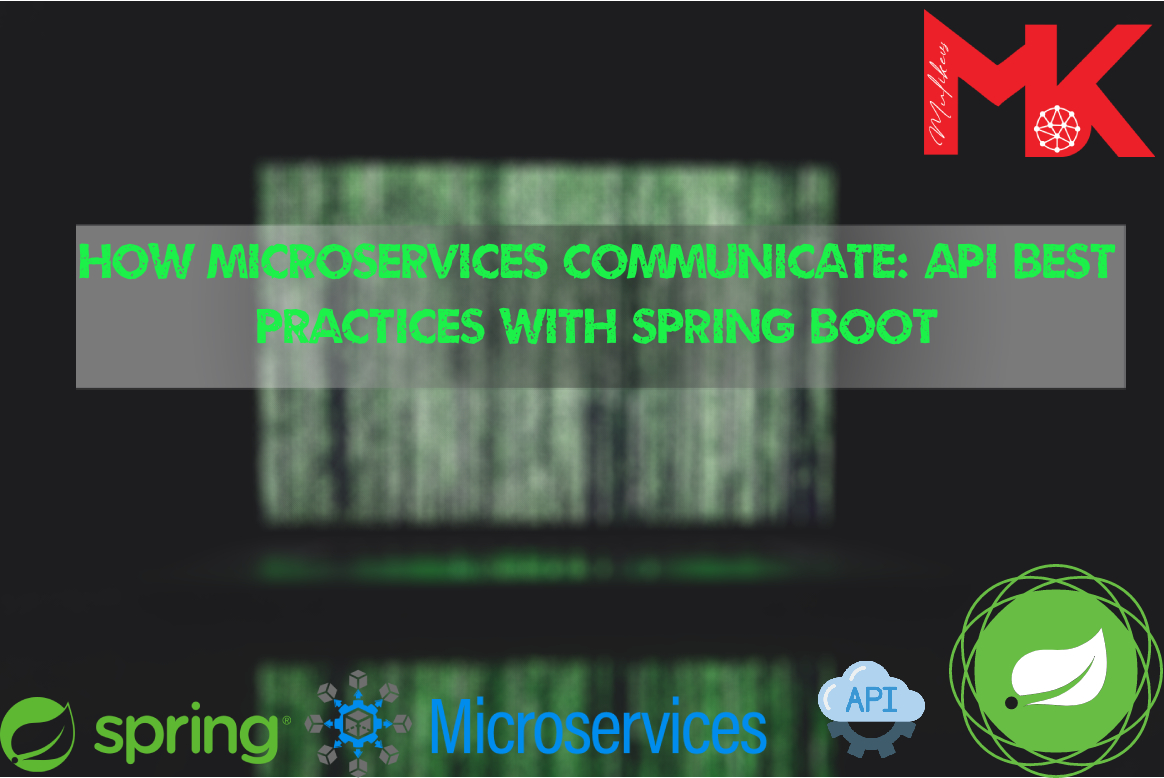How Microservices Communicate and some API Best Practices with Spring Boot
Microservices
How Microservices Communicate and some API Best Practices with Spring Boot
Microservices are a way of architecting software applications as a collection of small, independent services. Each service is responsible for a specific task or set of tasks, and they communicate with each other over well-defined APIs.
There are two main ways that microservices can communicate:
- v Synchronous communication: In synchronous communication, the client sends a request to the service and waits for a response before continuing. This is the simplest way to communicate between microservices, but it can lead to bottlenecks if the service is slow or overloaded.
- v Asynchronous communication: In asynchronous communication, the client sends a request to the service and does not wait for a response. The service will eventually send a message back to the client, but the client can continue with its work in the meantime. This is a more scalable way to communicate between microservices, but it can be more complex to implement.
API Best Practices for Microservices
When designing APIs for microservices, there are a few best practices to keep in mind:
- v Use well-defined and versioned APIs: This means that the APIs should be clearly documented and that the schema for the requests and responses should be versioned so that changes can be made without breaking existing clients.
- v Use RESTful APIs: RESTful APIs are based on the HTTP protocol and use standard HTTP verbs like GET, POST, PUT, and DELETE to perform operations. This makes them easy to understand and use, and they are also well-supported by most programming languages. In addition to RESTful APIs, you can also use other API methods like XML, SOAP and ISO… to communicate between microservices. XML is a more verbose format, but it can be easier to read and understand. ISO is a standard format for exchanging data between different systems.
- v Use a message broker or framework for asynchronous communication: A message broker or framework can be used to decouple microservices and improve scalability. When a microservice sends a message to a message broker or framework, it does not need to wait for a response. The message broker or framework will deliver the message to the appropriate microservice when it is ready.
- Some examples of message brokers include:
Apache Kafka
RabbitMQ
ActiveMQ
Some examples of frameworks for asynchronous communication include:
OpenFeign
Spring Cloud Stream
Spring Cloud Messaging
The choice of message broker or framework will depend on your specific needs and requirements.
Example
Here is an example of how two microservices can communicate using Spring Boot and OpenFeign:
The first microservice is a product catalog service. It exposes a RESTful API that allows clients to retrieve product information.
The second microservice is a shopping cart service. It exposes a RESTful API that allows clients to add products to a shopping cart and checkout.
The product catalog service and the shopping cart service can communicate with each other using the following steps:
- v The shopping cart service creates an Order object.
- v The shopping cart service uses OpenFeign to send a request to the product catalog service to retrieve product information for the Order object.
- v The product catalog service responds with a list of products.
- v The shopping cart service adds the products to the Order object.
The following code shows how the shopping cart service can use OpenFeign to send a request to the product catalog service:
The following code shows how the product catalog service can respond to the request:
@RestControllerpublic class ProductCatalogController {
@Autowired private ProductCatalogClient productCatalogClient;
@GetMapping("/products") public List<Product> getProducts() { return productCatalogClient.getProducts(); }}
This is just a simple example, but it shows how you can use OpenFeign to communicate with microservices asynchronously.
Conclusion
Microservices communication is a complex topic, but it is essential for building scalable and reliable microservices applications. By following the best practices outlined in this article, you can ensure that your microservices communicate effectively and efficiently.
Here are some additional tips for microservices communication:
- v Use a consistent naming convention for your APIs. This will make it easier for developers to understand and use your APIs.
- v Use a consistent error handling mechanism. This will help to ensure that your microservices can recover gracefully from errors.
- v Use a logging framework to track communication between microservices. This will help you to identify and troubleshoot problems.
- v Monitor your microservices communication to identify and troubleshoot problems. This will help you to ensure that your microservices are communicating as expected.
By following these tips, you can build microservices applications that are well-designed and easy to maintain.
How Microservices Communicate and some API Best Practices with Spring Boot
 "The universe is full of magical things, patiently waiting for our wits to grow sharper." - Eden Phillpotts
"The universe is full of magical things, patiently waiting for our wits to grow sharper." - Eden Phillpotts
September 05, 2023
Comments

iusto ex dolorem rerum in magni quidem id. quaerat rerum ex rem tenetur sit quibusdam autem sint.

esse inventore quibusdam alias inventore quo aut. molestiae cumque asperiores ea magnam aut. est animi quis ab ut harum illo voluptate.

quia iste temporibus qui distinctio quis nam omnis ex eligendi blanditiis ex consectetur dolore ut vitae nisi beatae quidem. voluptas modi soluta ea placeat rerum neque quo tenetur animi at deleniti a

